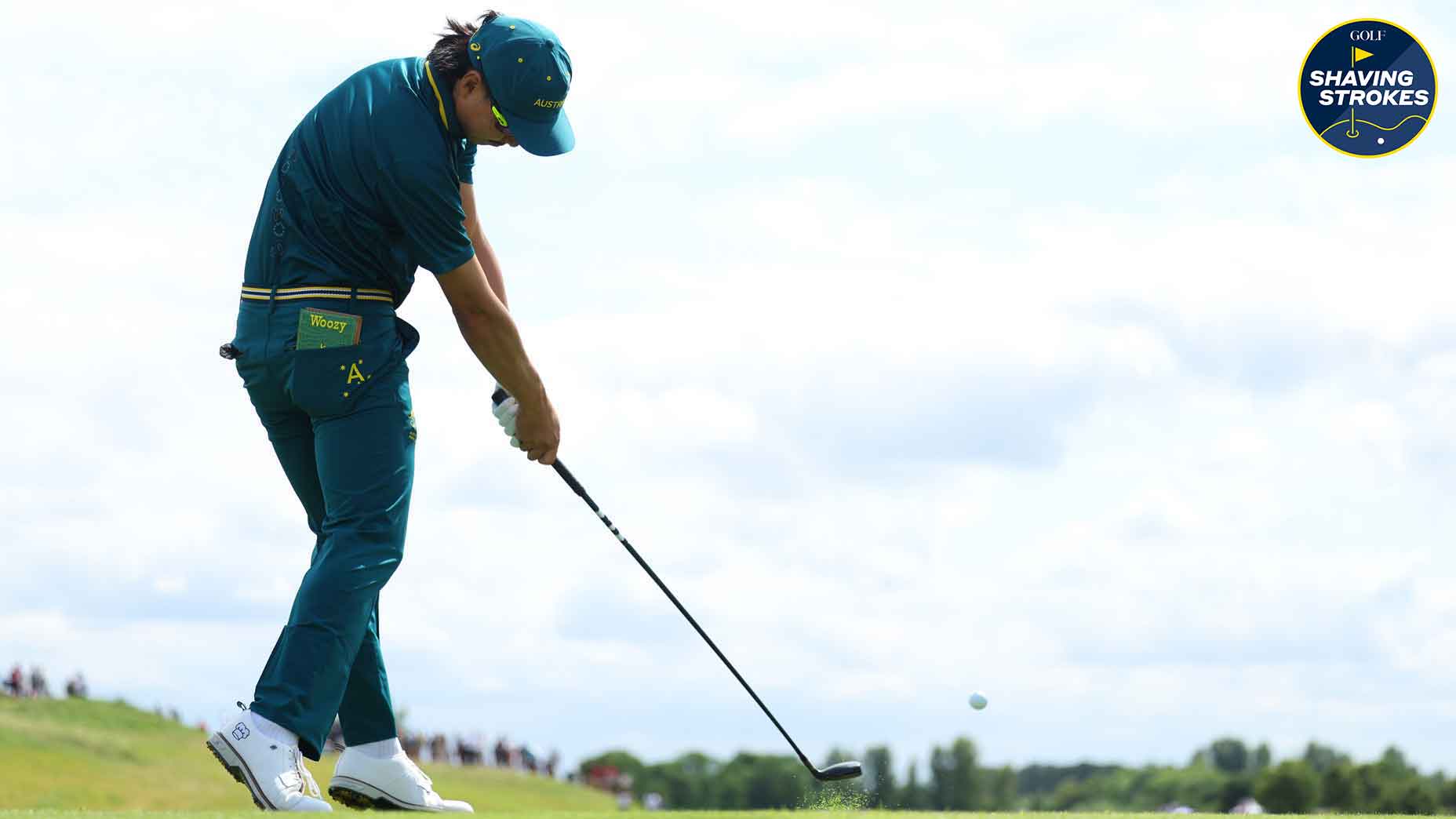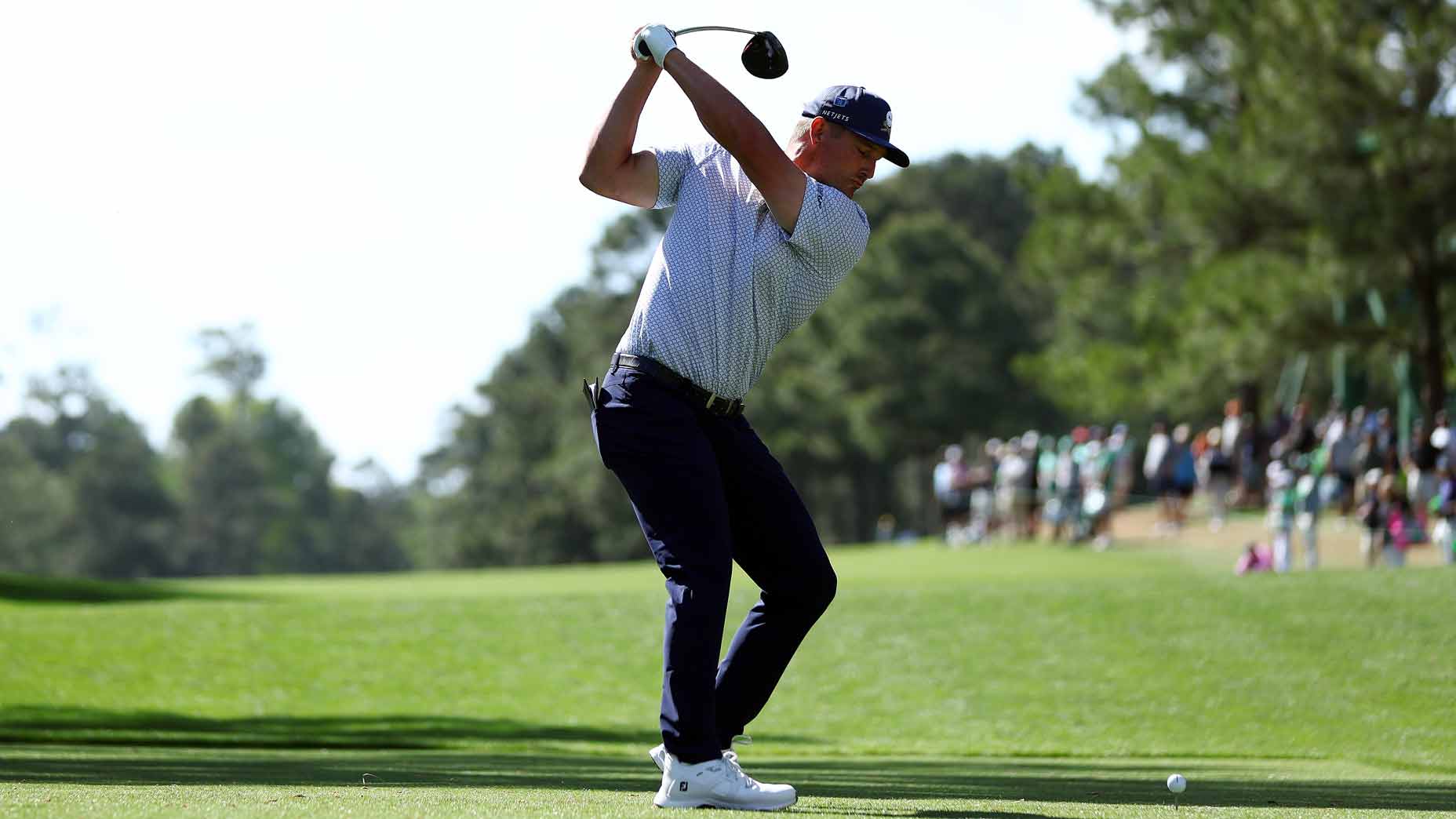A go-to guide for translating speed-training gains to the golf course
- Share on Facebook
- Share on Twitter
- Share by Email

When you're working on speed-training, here's how to efficiently take it from the range to the course.
Getty Images
If you’ve never done a speed-training program before, it’s quite the adventure. While most amateur players simply think that swinging out of their shoes will make the ball travel farther, the truth is that it takes proper sequencing to generate more speed — so that you don’t bomb it off the tee with an open clubface that makes your ball slice out of bounds.
Our Picks: 5 speed-training aids to help transform your gameBy: Nick Dimengo
That’s where speed-training aids and programs really help the most.
But what happens when you’re starting to make progress during practice but can’t apply the learnings to the course? I asked GOLF Teacher to Watch Matt Henderson this very question, so he gave me some tips that can help every golfer seeking speed to stay confident, trust the process, and avoid any frustration.
Follow this plan to translate speed-training to your next round
“Plenty of golfers have turned to speed-training to gain more clubhead speed, utilizing different products or systems to properly develop more power,” Henderson says. “Typically, players use weighted clubs, go through a training plan, and chart their progress — likely through an app on their phone.”
While speed-training is a great option for players, Henderson cautions against doing it rogue, which can lead to inconsistencies, possible frustration, and even injuries.
How to increase your swing speed in just 60 seconds, according to Jordan Spieth’s swing coachBy: Nick Dimengo
“Working on gaining speed can be a great option for a lot of golfers, and if your body is physically prepared to go through the training process, I’d recommend all players try it,” Henderson adds. “But I’ve noticed that lots of my students who have engaged in speed-training programs struggle to see their progress reflected on the course.
“While their clubhead speed is increasing and their distance numbers are going up during training, when they don’t see the gains translate to their next round, they can get irritated.”
To help avoid experiencing this for yourself, Henderson shares a four-phase system that helps bring any speed-training gains from practice to performance — so here’s his step-by-step approach.
Phase 1: Driver, no ball, no radar
In this first phase, take a high-intensity swing with your driver — but don’t use a ball or a radar, just pure speed. This eliminates concerns about direction and center-face contact, allowing you to focus purely on accelerating your swing with your actual driver, not a training aid. Practicing at full-speed and with intent helps build comfort and confidence with your own club, as opposed to adjusting to the difference between the weight of a training aid and your driver.
Phase 2: Driver, net, and radar
Once you’re comfortable swinging at high speeds, move to a net and introduce the radar, hitting actual balls. Practicing in a net allows you to focus internally, ignoring direction or distance, and to concentrate only on the speed numbers showing up on the radar. This phase trains you to push your limits, achieving higher speeds without the mental confines of trying to keep the ball in play.
Phase 3: Driving range, ball, and radar
In this phase, it’s time to transition to the driving range with your driver, using a radar to monitor your speed. Focus on the clubhead speed and trying to get the numbers to be similar to what you experienced in the previous stage. In this controlled setting, it’s not uncommon to add in some light cardio (such as jumping jacks) to boost your intensity and keep your swing as fast as possible.
Phase 4: On-course proofing
Finally, bring your driver to the course and test yourself in real-life conditions, using a launch monitor to assess your true on-course speed. This phase emphasizes taking your swing intensity up a notch in real play — a skill that I found with students is essential for maintaining speed gains made in training. Testing on-course reveals the true transfer of your training gains and helps you adjust for competitive situations.
“Small changes can make a significant difference when translating training gains to actual rounds,” Henderson adds. “By using this four-step process, you’ll have a clearer, more consistent path to improved clubhead speed on the course and not just in practice.”

TheStack Swing Speed Trainer (Hardware + App Bundle)
View Product
Latest In Instruction

Golf.com Contributor

Nick Dimengo
Golf.com Editor











